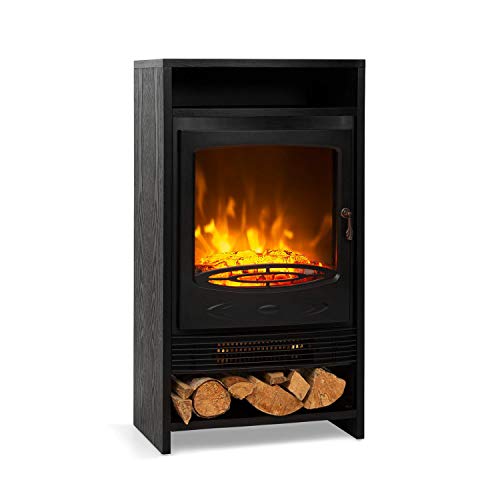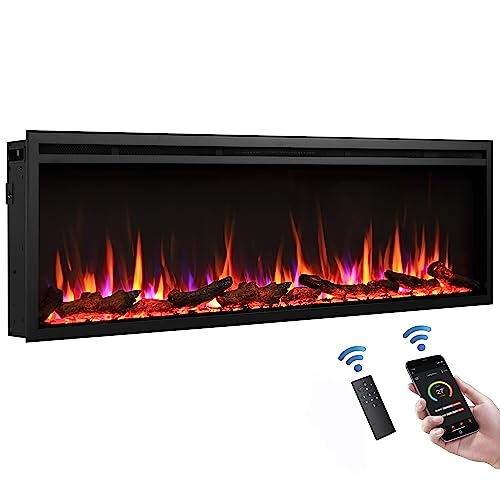25 Surprising Facts About Wood Burner Fireplace
페이지 정보
작성자 Ava 댓글 0건 조회 49회 작성일 24-09-23 17:13본문
 How to Get the Most From a Wood Burner fireplace stove
How to Get the Most From a Wood Burner fireplace stoveIn contrast to traditional open fireplaces, wood stoves are engineered and designed to burn wood. This enables them to comply with stricter emission regulations.
 Wood burning stoves provide dancing yellow flames, cosy crackling sounds and that primal sensation of warmth. The smoke that is generated contains toxic air pollutants like formaldehyde, benzene, and polycyclic aromatic hydrocarbons.
Wood burning stoves provide dancing yellow flames, cosy crackling sounds and that primal sensation of warmth. The smoke that is generated contains toxic air pollutants like formaldehyde, benzene, and polycyclic aromatic hydrocarbons.Efficient
Fireplaces and stoves that are wood-burning are not just gorgeous, but they are also extremely efficient. A top-quality wood burner could be eco-friendly up to 77%. It is essential to get the most value of your wood burner particularly with the rising energy costs. The good thing is that it's now easier than ever before to do!
The amount of moisture in firewood is a key factor that determines how efficient a wood-burning stove is. This is why we suggest only using seasoned wood, which has been dried for a minimum of one year, and often two years. The more dry the wood the more efficiently it burns which means less smoke and harmful emissions.
Another great benefit of a wood-burning stove is that it's a low carbon source of fuel, which is great for the environment. Additionally, by purchasing locally-sourced firewood, you are helping to support the active management of woodlands, which is a great aspect for wildlife.
In terms of maintenance concerned, the only requirement of a wood burner is to remove and scoop up the ash. This can be a bit of a nuisance, but is well worth it to ensure you get most heat from every log. Furthermore, if you wait 2-3 days until the ashes completely cool they can be used as an eco-friendly and non-toxic ice melt. They can also be used to polish jewellery or absorb odors.
A electric fireplace with a wood burner is a timeless classic. Although they're not as popular than gas fires, there is no denying the charm and enthralling sound of a warm log fire. These fires are perfect for snuggling up with on cold nights, and they create a warm and welcoming space in your home. Choose a high-quality wood stove and you'll start reaping the benefits for many years to be! Our chimney sweeps are on hand to assist you in getting the most value from your stove - give us a call today to find out more.
Low Carbon
Burners that burn clean and efficiently are among the most efficient ways to save the cost of logs while keeping your home warm. As an added benefit they also aid in local woodland management, which is a fantastic way to support the wildlife that lives in your area.
When properly maintained, wood-burning fireplaces and stoves emit little or no pollution when they are used with dry and seasoned wood. If they aren't properly maintained or use wood of poor quality, the smoke that is produced contains fine particles often referred to as particulate pollutants, which can irritate lung organs and other body organs. Carbon monoxide, toxic air pollutants such as benzene and formaldehyde and polycyclic aromatic hydrocarbons are also present. Inhaling this type of air pollution can cause lung irritation, coughing, wheezing and asthma attacks and may even lead to serious health issues such as cancer, heart disease, or premature death.
Some people worry that using a wood-burning stove could contribute to climate change, but this is not necessarily true. Wood burning is a carbon neutral energy source. The wood absorbs carbon dioxide throughout its lifetime. After burning the carbon dioxide is released into the atmosphere.
The wood is produced locally, which reduces the amount of pollution released during transportation. It is essential to select hardwoods that have been seasoned and of top quality. They will burn longer and more evenly than softwoods.
Modern, EPA certified wood stoves and heaters (such as those manufactured by Charlton & Jenrick) have considerably lower emissions than earlier stoves. They have been certified to meet 2020 EPA standards, which are considerably more stringent than the previous emission limits.
All wood-burning stoves must be fully vented to the outside of your home to ensure they do not cause a build-up of exhaust in your house. All of our DEFRA-exempt and clean burn stoves can create extremely clear exhaust by keeping the flames at a distance from the wood logs and by using dry, seasoned firewood.
A wood-burning stove with a catalytic converter can provide the ultimate low carbon heating option. These units re-ignite the gases and particulates that were ignited during the initial combustion in a subsequent stage by mixing them with superheated air. The remaining gasses and particulates are pumped through a catalytic combustion unit for a final and third combustion. This further reduces emissions to levels that are below the government standards.
Clean Burn
Cleanburn wood stoves are designed to burn fuel with the greatest efficiency that is possible. This results in the release of minimal particles into the air when burning wood. The air management system of the stove regulates the intake and exhaust of gases, ensuring that the combustion process takes place in a sealed and controlled environment. It also regulates the flame height to reduce emissions and maximize heat output.
This means that your chimney and its surroundings will be much cleaner than older stoves. Particulate matter (also called particle pollution) caused by incomplete combustion of wood causes respiratory problems such as wheezing and coughing and contributes to the development of heart disease, stroke, diabetes and other serious health conditions. The air pollution resulting from wood combustion is a contributory factor in poor air quality in urban areas.
The smoke from poorly combusted wood is a mixture of fine particulate matter and dangerous air pollutants, including carbon monoxide volatile organic compounds nitrogen oxides, benzene formaldehyde, and polycyclic aromatic hydrocarbons. These particles can penetrate deep into the lungs and other organs, causing discomfort, injury, and even death. Dust particles from the air can also damage the surfaces in your home, and can give a gritty feel to rooms.
It is important to select high-quality, seasoned and dried firewood when using your wood burner fireplace suite. The most efficient woods for heating are hardwoods, such as beech, oak and ash. Hardwoods are dense and have a more BTU than softwoods. They also provide more heat.
You should also check whether your local authority has regulations regarding wood burning. These may include nuisance/odor rules and visible emissions or the opacity limit for smoke.
It is crucial to keep the glass of a wood stove that has an open front that is free of deposits and dirt. This can be done with dry cloths or oven cleaner spray. You can also add bicarbonate soda mixed with water to the glass.
Regular maintenance of your stove and chimney is also essential. Regular chimney cleanings are required to eliminate creosote, and to ensure that the flue works correctly. Also be sure to mark dates for periodic inspections in your diary, as this will allow you to avoid costly repairs and prolong the life of your wood burner.
Low Maintenance
Wood burning fireplaces are very popular because they offer natural warmth. However, this type of fire requires some care and maintenance. If it is not maintained and cleaned regularly, the chimney, flue and stove can all be potential sources of fires in your home. Fireplaces can also be an excellent source of heat when the power goes out, especially during winter when snow storms can cause branches of trees to fall and rip down power lines.
Using a wood stove to heat your home can reduce your carbon footprint significantly in comparison to other fossil fuel sources such as gas. Modern wood stoves, inserts and fireplaces are built to meet EPA standards (Environmental Protection Agency) which means they emit very little emissions. The more well-seasoned wood you use, the more efficient the stove will be. You'll require less wood to generate the same amount of heat.
Fireplaces require some maintenance and care. They must be kept clear of combustible material and have a screen. Air flow will be improved by keeping the grate clear of ash and other debris. This will ensure that the fire is burning longer and your home tidy. It is important to have your chimney and stove cleaned at least twice per year to prevent creosote accumulation that could create a fire hazard or clog and hinder ventilation.
It can take a while for a new homeowner to master the art of to ignite, light and maintain a steady fire in the fireplace. Once you've learned the art, your wood burner will be a source for warmth and comfort within your home.
Wood burning stone fireplaces (check out here) have been in use in a variety of forms for nearly 500 years, and have rediscovered their popularity because of their efficiency, sustainability, and the natural warmth and aroma of real wood. If you're thinking of buying the purchase of a new heater, consult with your local certified Regency dealer to learn more about the advantages of a wood stove or an insert for your home.
댓글목록
등록된 댓글이 없습니다.